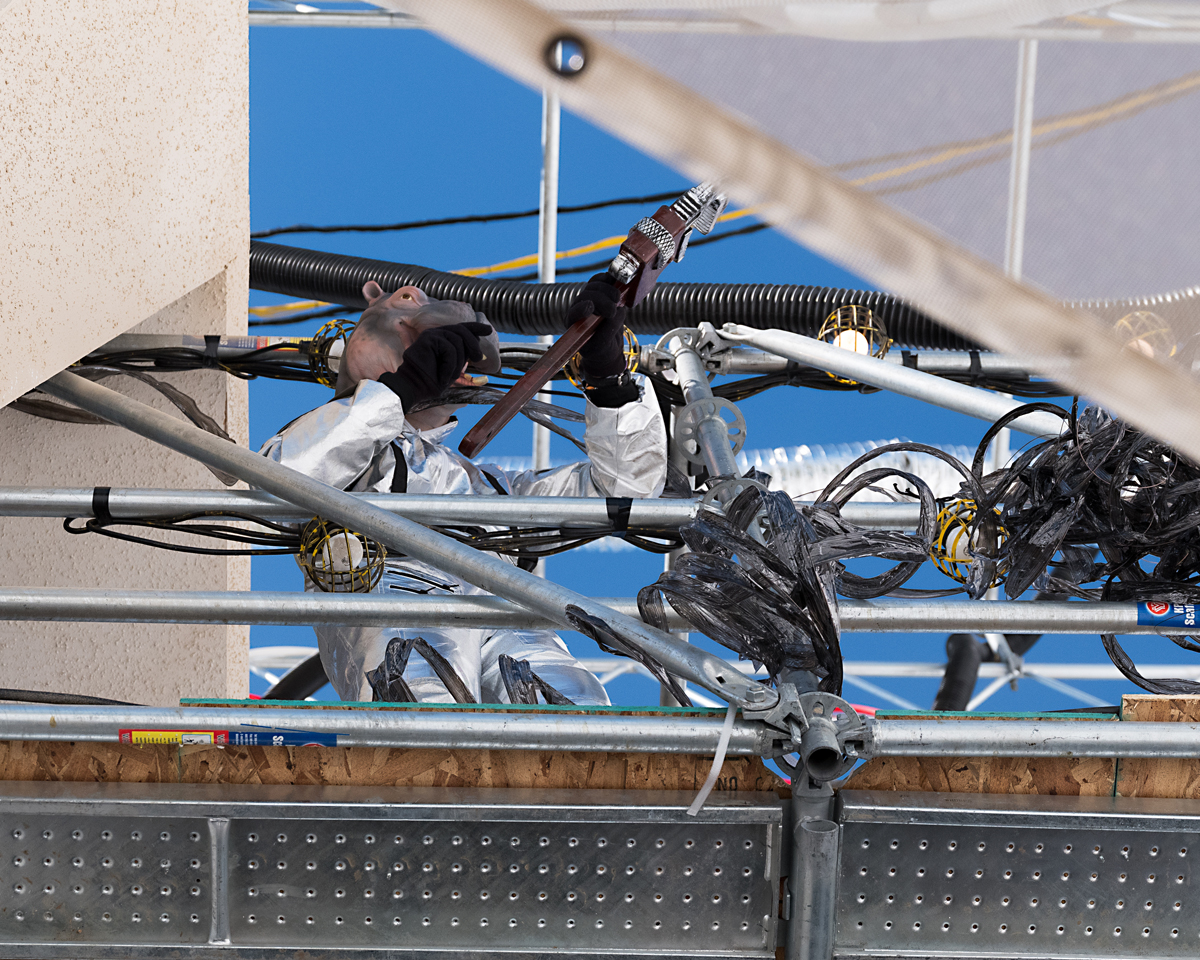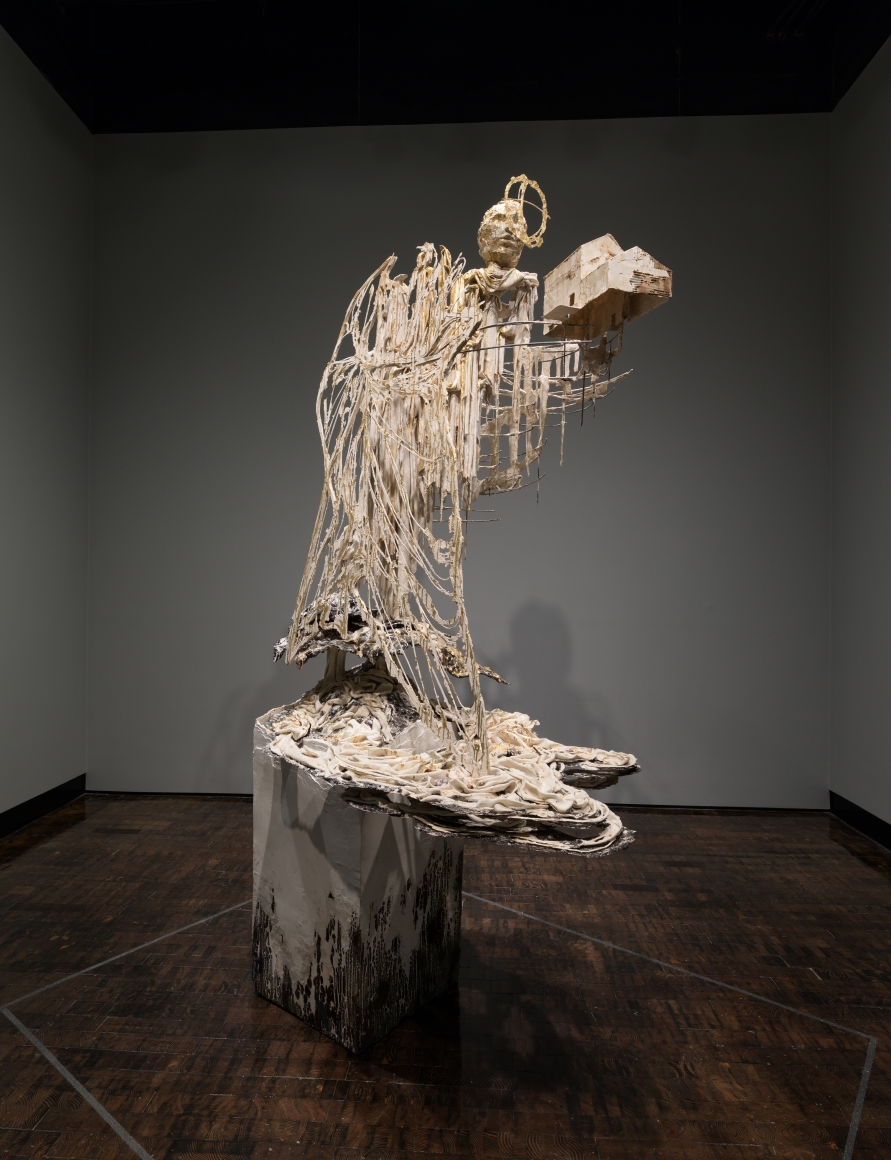
Spanish artist Pablo Valbuena alters viewers’ experiences with architecture with his projection-based installation art. Valbuena prefers to work in cavernous, abandoned spaces where he can use bright, white light to ephemerally draw on the walls. He typically arranges his projections to respond the existing architectural structure. As the geometric light projections in each piece shift, viewers’ relationship to the space changes.
Valbuena’s latest work, “Kinematope,” took place in the Parisian train station Gare d’Austerlitz. As viewers moved through the tunnels, light flooded each section one by one. A clicking sound accompanied each flash of light. The sounds and flashes grew faster and more intense until light filled the entire tunnel. Then it returned to blackness. As you can see in the GIFs and video below, the piece was hypnotic and disorienting to observe. Valbuena says he is interested in exploring perception and blurring the boundaries between physical and imagined spaces in his work, and “Kinematope” is no exception.
GIFs by Kevin Holmes (via Creators Project).

“Kinematope.” Gare d’Austerlitz train station, Paris, France. 2014.

“Para-Site.” Laboral centro de Arte. Gijon, Spain. 2014.

“Quadratura.” Matadero Madrid, Spain. 2010.



“Para-Site,” Mattress Factory Art Museum, Pittsburgh, PA. 2011.




 The easily stirred may want to avoid rooms transformed by Austrian artist
The easily stirred may want to avoid rooms transformed by Austrian artist  At Coachella, the action contained within an 80-foot-tall wooden rocket towering over the festival became a star of this year’s visual artist line-up. Duo
At Coachella, the action contained within an 80-foot-tall wooden rocket towering over the festival became a star of this year’s visual artist line-up. Duo  Diana Al-Hadid’s ghostly sculptures, which take influence from historical architecture, mythology, and beyond, are currently inhabiting both a gallery at Frist Art Museum and outdoor gardens at Cheekwood in concurrent exhibitions in Nashville. “Subliminations” collects varying types of work from the artist, with both figurative sculpture and wall reliefs. Above and below interior photos are by John Schweikert.
Diana Al-Hadid’s ghostly sculptures, which take influence from historical architecture, mythology, and beyond, are currently inhabiting both a gallery at Frist Art Museum and outdoor gardens at Cheekwood in concurrent exhibitions in Nashville. “Subliminations” collects varying types of work from the artist, with both figurative sculpture and wall reliefs. Above and below interior photos are by John Schweikert. Rainbow-colored mannequin legs, animal bones, skulls, and gold- these are just a few of the materials used in
Rainbow-colored mannequin legs, animal bones, skulls, and gold- these are just a few of the materials used in